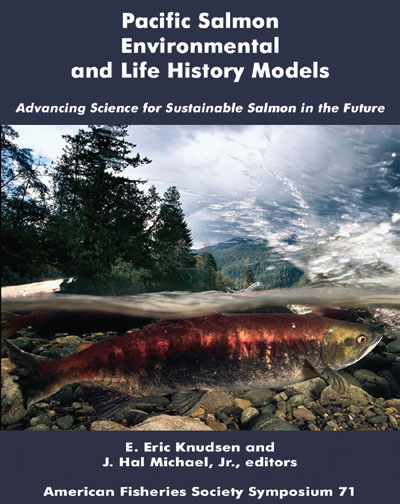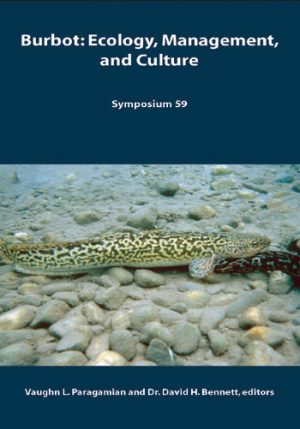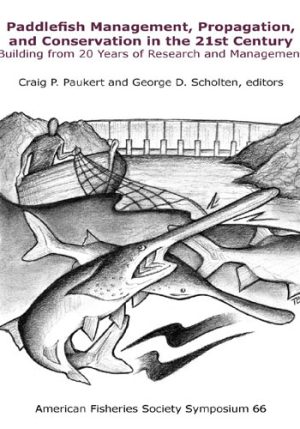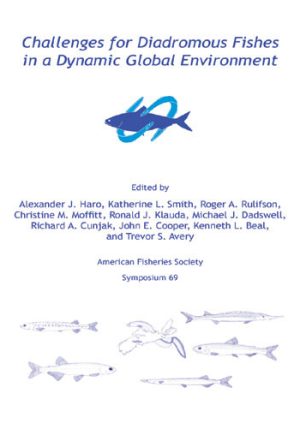Description
E. Eric Knudsen and J. Hal Michael, Jr., editors
464 pages
Published by the American Fisheries Society
Publication date: August 2009
ISBN: 978-1-934874-09-7
doi: https://doi.org/10.47886/9781934874097
****HARD COPY OUT OF STOCK****
Summary
Many Pacific salmon and anadromous trout populations are in chronic decline. An important aspect of salmon management is an understanding of the factors that drive salmon population production and the ability to predict run sizes. Advanced simulation methods are needed for better describing and understanding the complex interactions between salmonids and their environment and improved decision-making about the effects of human activities on their productivity.
This book presents recent progress in modeling tools that have practical application for estimating full production capacity, determining appropriate harvest levels, and providing information essential for habitat remediation.
CONTENTS
Introduction: the Past, Present, and Future of Pacific Salmon Environmental and Life History Models (E. Eric Knudsen and J. Hal Michael, Jr.)
Section I: Perspectives on Salmon Life History Modeling
Life History Models for Salmon Management: the Challenges (Ray Hilborn)
What Are We Missing? Butterflies, Flowers, and Salmon Models (Peter W. Lawson)
We Are on the Right Path, But it is Uphill Both Ways (Richard Beamish, Ruston Sweeting, and Chrys-Ellen Neville)
Section II: Advances in Salmon Biology and Information for Life History Modeling
Long-term Perspectives on Salmon Abundance: Evidence from Lake Sediments and Tree Rings (Deanne Drake, Robert J. Naiman, Bruce Finney, and Irene Gregory-Eaves)
Climate Change and Dynamic Ocean Carrying Capacity: Growth and Survival of Pacific Salmon at Sea (Jennifer L. Nielsen and Gregory T. Ruggerone)
The Importance of Metadata to Salmon Population Research and Conservation (Cathy P. Kellon, Peter S. Rand, Xanthippe Augerot, and John Bonkoski)
Section III: Statistical Models that Incorporate Life History Information
Statistical Models of Pacific Salmon that Include Environmental Variables (Randall M. Peterman, Brian J. Pyper, Franz J. Mueter, Steven L. Haeseker, Zhenming Su, and Brigitte Dorner)
Importance of Marine-Derived Nutrients in Establishing Escapement Goals for Pacific Salmon (David R. Bernard and Robert A. Clark)
Generalizing the Multi-Stage Stock-Production Paradigm: a Flexible Architecture for Population Modeling (Peter Fritz Baker)
Section IV: Habitat-Related Life History Modeling Techniques for Pacific Salmon
Estimating the Freshwater Component of Essential Fish Habitat for Pacific Salmon with the Shiraz Model (Mark D. Scheuerell and Ray Hilborn)
Modeling the Effect of Stream Network Characteristics and Juvenile Movement on Coho Salmon (Scott G. Liebowitz and Denis White)
Linking Stream Carrying Capacity for Salmonids to Habitat Features (Steven P. Cramer and Nicklaus K. Ackerman)
Prediction of Stream Carrying Capacity for Steelhead: the Unit Characteristic Method (Steven P. Cramer and Nicklaus K. Ackerman)
The Ecosystem Diagnosis and Treatment Model: A Tool for Assessing Salmonid Performance Potential Based on Habitat Conditions (Gregory R. Blair, Lawrence C. Lestelle, and Lars E. Mobrand)
Restoring Habitat Could Recover Chinook Populations in the Dungeness and Dosewallips Watersheds (Brad E. Thompson, Lawrence C. Lestelle, Gregory R. Blair, Lars E. Mobrand, and James B. Scott)
Section V: Incorporating Uncertainty into Decision-Making with Salmon Life History Models
Uncertainty in a Complex Salmon Habitat Model (Paul McElhany, E. Ashley Steel, David Jensen, and Karen A. Avery)
Mind the Gap: Uncertainty and Model Communication Between Managers and Scientists (E. Ashley Steel, Timothy J. Beechie, Mary H. Ruckelshaus, Aimee H. Fullerton, Paul McElhany, and Phil Roni)
Section VI: Management Applications of Life History Modeling
Using a Salmon Life-History Simulation Model to Evaluate Escapement Goals Derived from a Spawner-Recruit Model (Toshihide Hamazaki)
Incorporating Spatial Structure and Diversity into Recovery Planning for Anadromous Pacific Salmonids (Kurt L. Fresh, William Graeber, Krista K. Bartz, Jeremy R. Davies Mark D. Scheuerell, Andrew D. Haas, Mary H. Ruckelshaus, and Beth Sanderson)
Multi-Species Modeling for Salmon: Alternatives, Challenges, and Opportunities (Correigh M. Greene and George R. Pess)
Use of the AHA Model in Pacific Salmon Recovery, Hatchery, and Fishery Planning (J. Hal Michael, Jr., Andrew Appleby, and John Barr)







